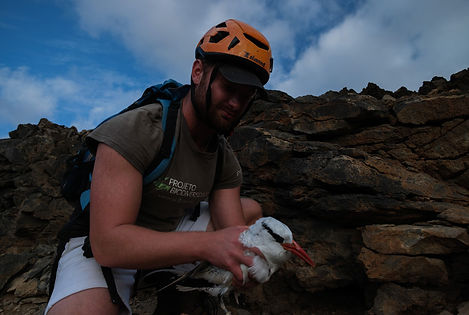
Are you a volunteer looking for a meaningful way to travel, experience new cultures, and contribute to an important cause?
Project Biodiversity needs a conservation volunteer like you!
If you’re a traveller, this destination offers an affordable travel experience with opportunities to live and work close to world-renowned beaches famous for their gorgeous scenery and shorelines — all while gaining valuable fieldwork experience in marine conservation, biology or a related field.
We are looking for motivated volunteers to help us increase the protection of local habitats, monitor the threats the nature reserves face, conduct censuses of fauna and flora, and overall, help this environment thrive.

Our island conservation programme is based in Santa Maria, a popular tourist destination known for its beaches and water sports. This volunteering opportunity will not only provide you with good experience in conservation techniques but also allow you to make a real difference in the protection of seabirds, endangered flora, and much more.

Our island conservation programme is based in Santa Maria, a popular tourist destination known for its beaches and water sports. This volunteering opportunity will not only provide you with good experience in conservation techniques but also allow you to make a real difference in the protection of seabirds, endangered flora, and much more.

Conservation Volunteer Opportunity
The island conservation programme is an opportunity with various activities, as volunteers join the different conservation teams of Project Biodiversity, such as the seabird monitoring team, marine monitoring, and plant restoration. That means the schedule is variable, allowing the volunteer to join different activities each week, gaining valuable skills on different fields of conservation. One day, you are in the top of the hills with the seabird team surveying ospreys, and the following day you are working on the plant nursery with endangered species. It is a great mix of flora and fauna conservation efforts.

Our Conservation Programmes and Work
A cornerstone of our mission is marine conservation and wildlife conservation programmes that tackle critical environmental issues affecting Sal Island’s marine animals, wildlife, and ecosystems.

Monitoring Seabirds
Our bird monitoring team on Sal Island studies over seven bird species to gain deeper insights into their roles within the island’s marine ecosystem.
-IMG_7350.jpg)
Sustainable Fisheries
Through the Guardians of the Sea initiative and engaging fishmongers, we have seen a large increase in sustainable fishing across the three fishing communities of Sal. Through outreach and building relationships, we have the support of fishermen who help monitor and protect marine megafauna

Protection of Key Habitats
Since we began in 2015, Project Biodiversity has focused on directly protecting sea turtles. It has expanded to include multiple initiatives to preserve and restore coastal habitats. These projects include co-management of Protected Areas, restoring dune habitats and preserving endangered plants.

Help us protect Sal’s Island biodiversity by joining our island conservation programme!
Volunteer with us this year! Join us for a transformative conservation volunteering experience and make a tangible impact. Participating in our island conservation programme will directly contribute to efforts to protect wildlife.
Get involved today and help us protect the island’s nature for generations to come!
.png)





-Application-ProjectBiodiversity1129.jpg)

